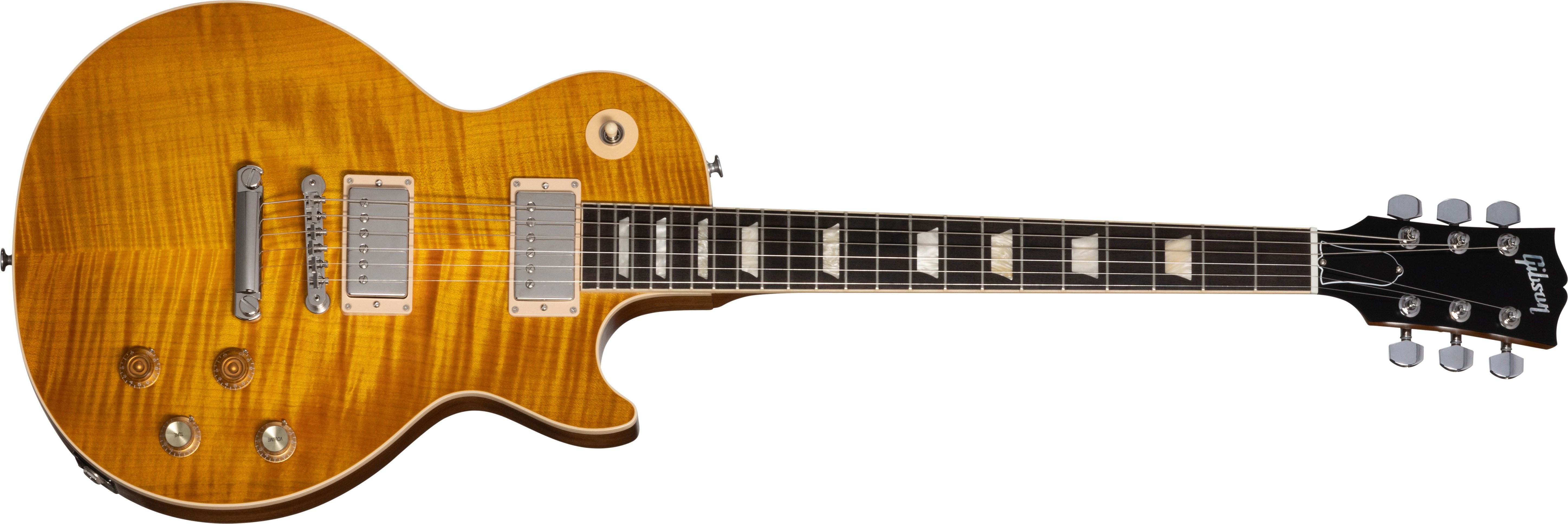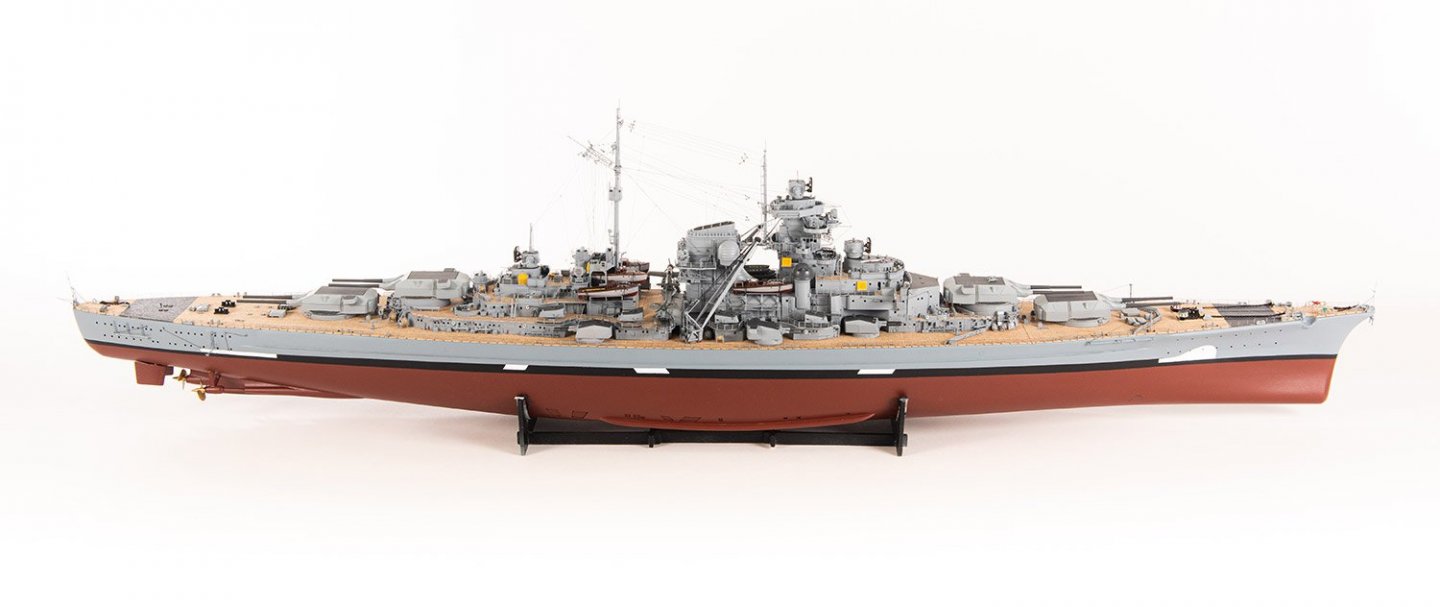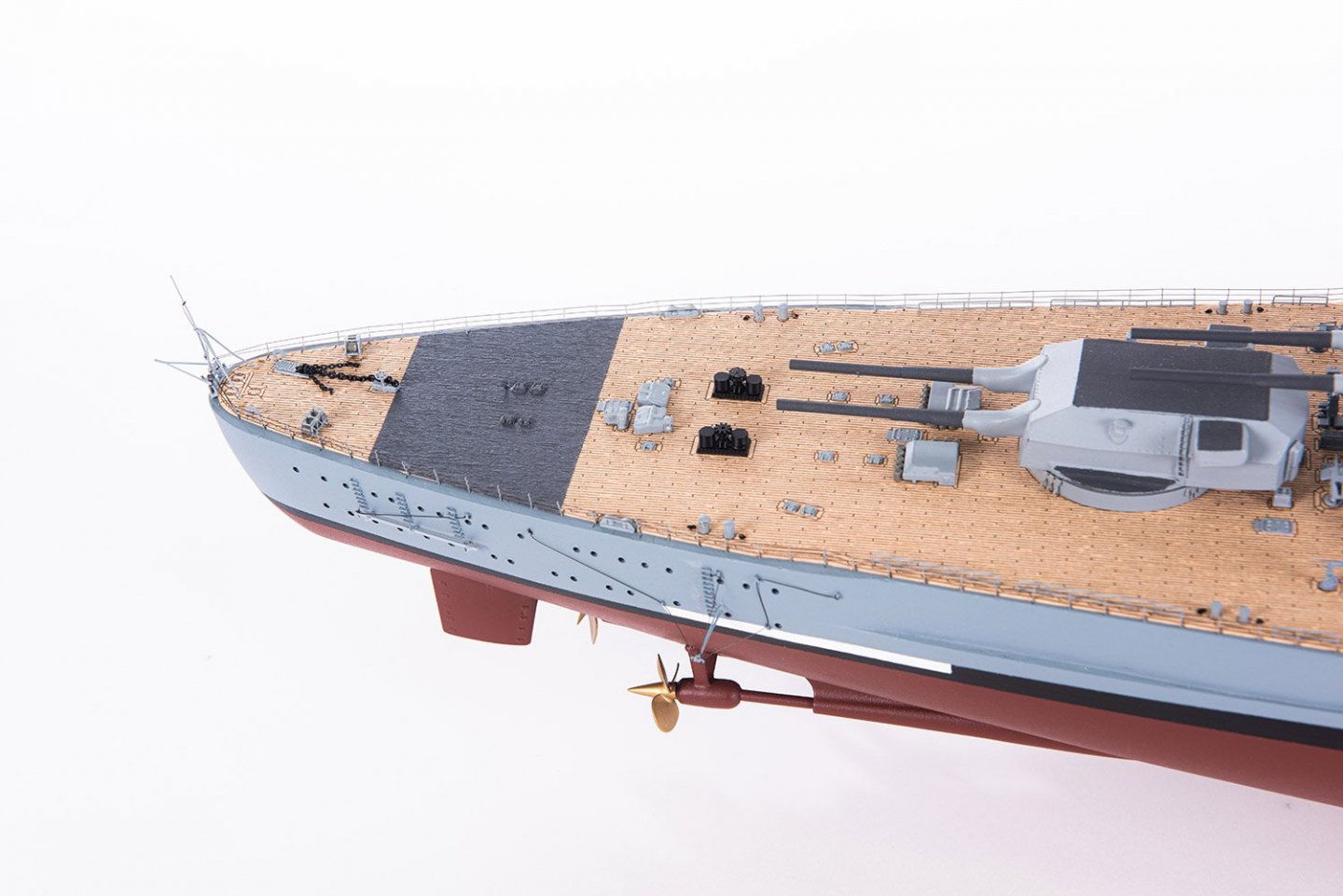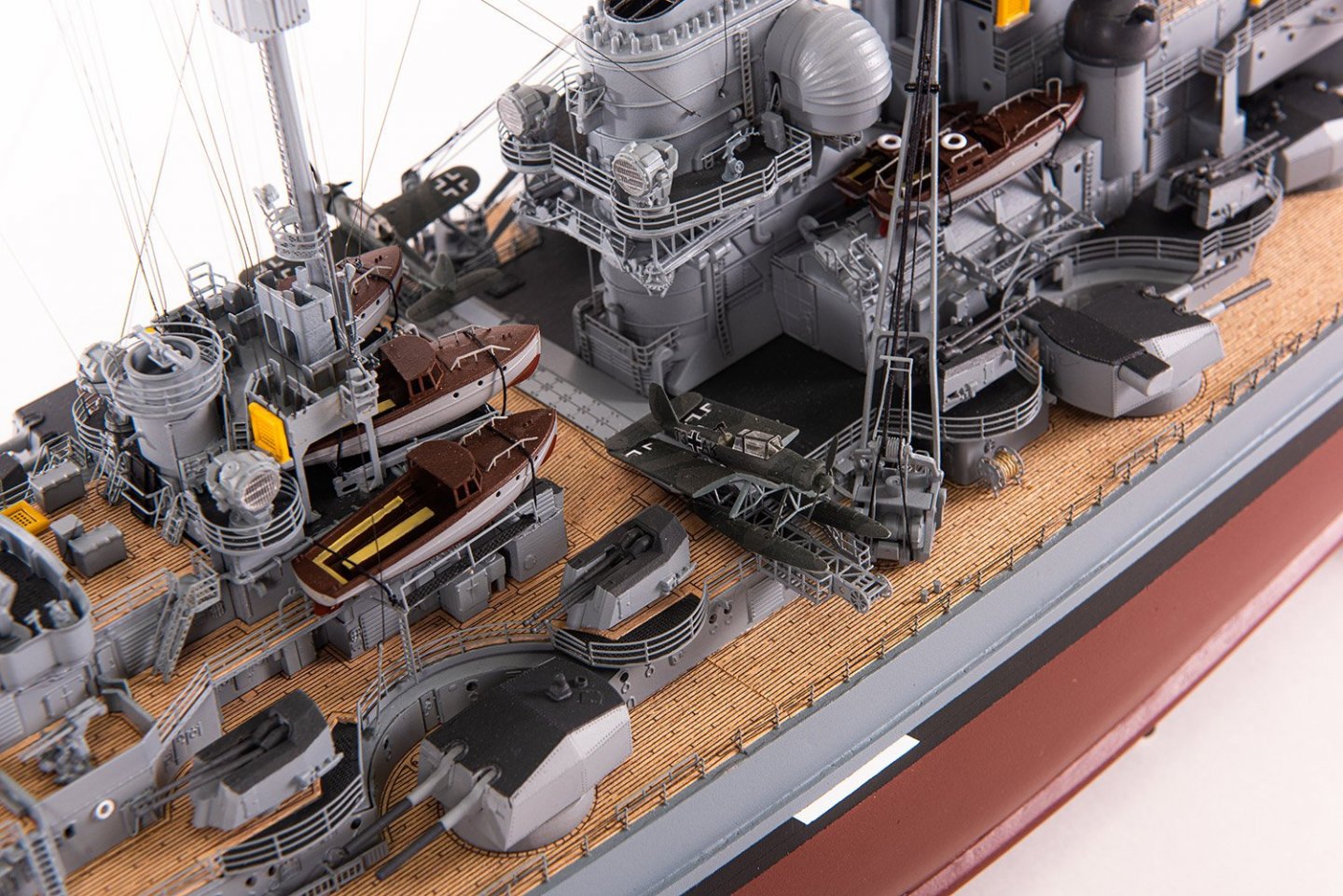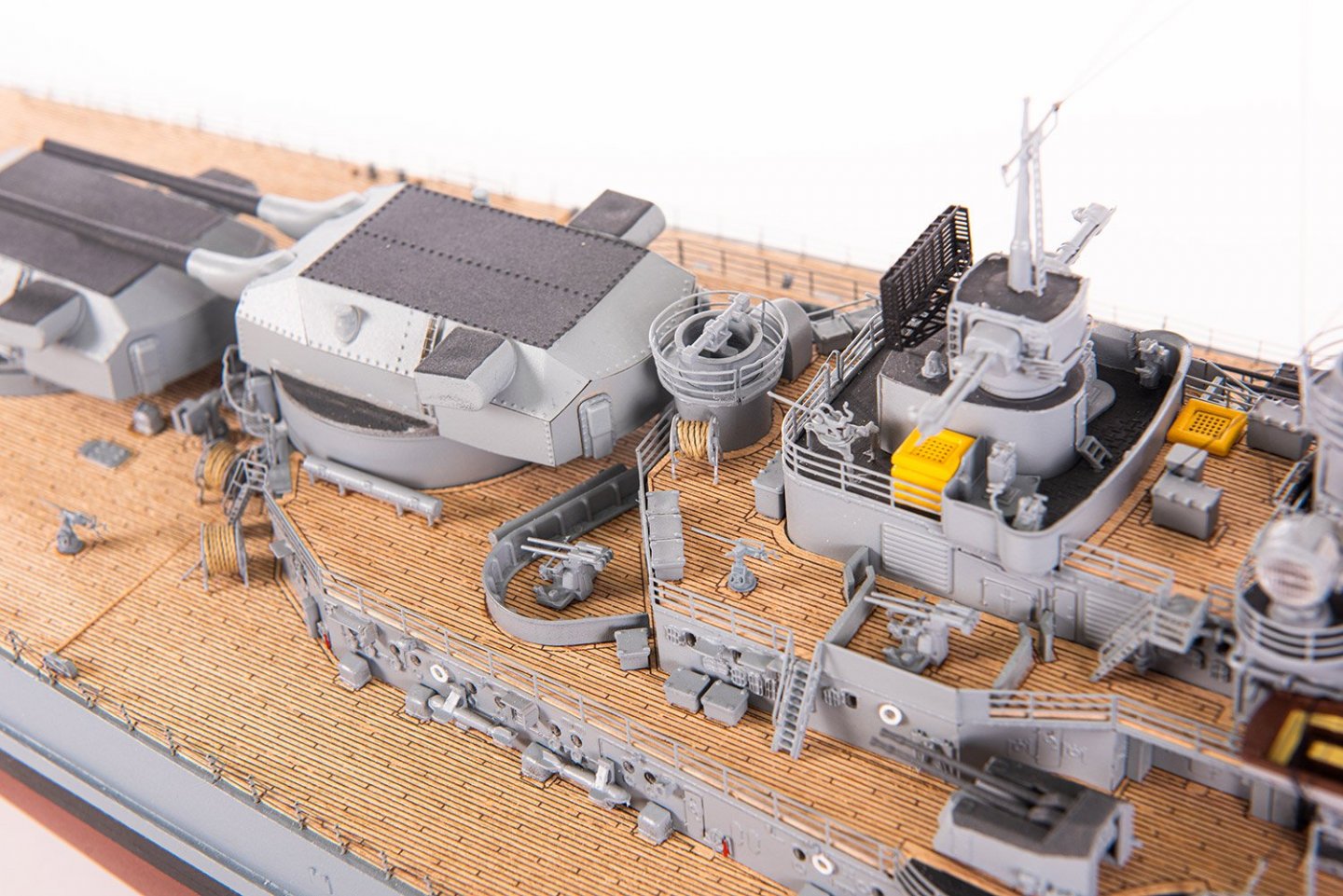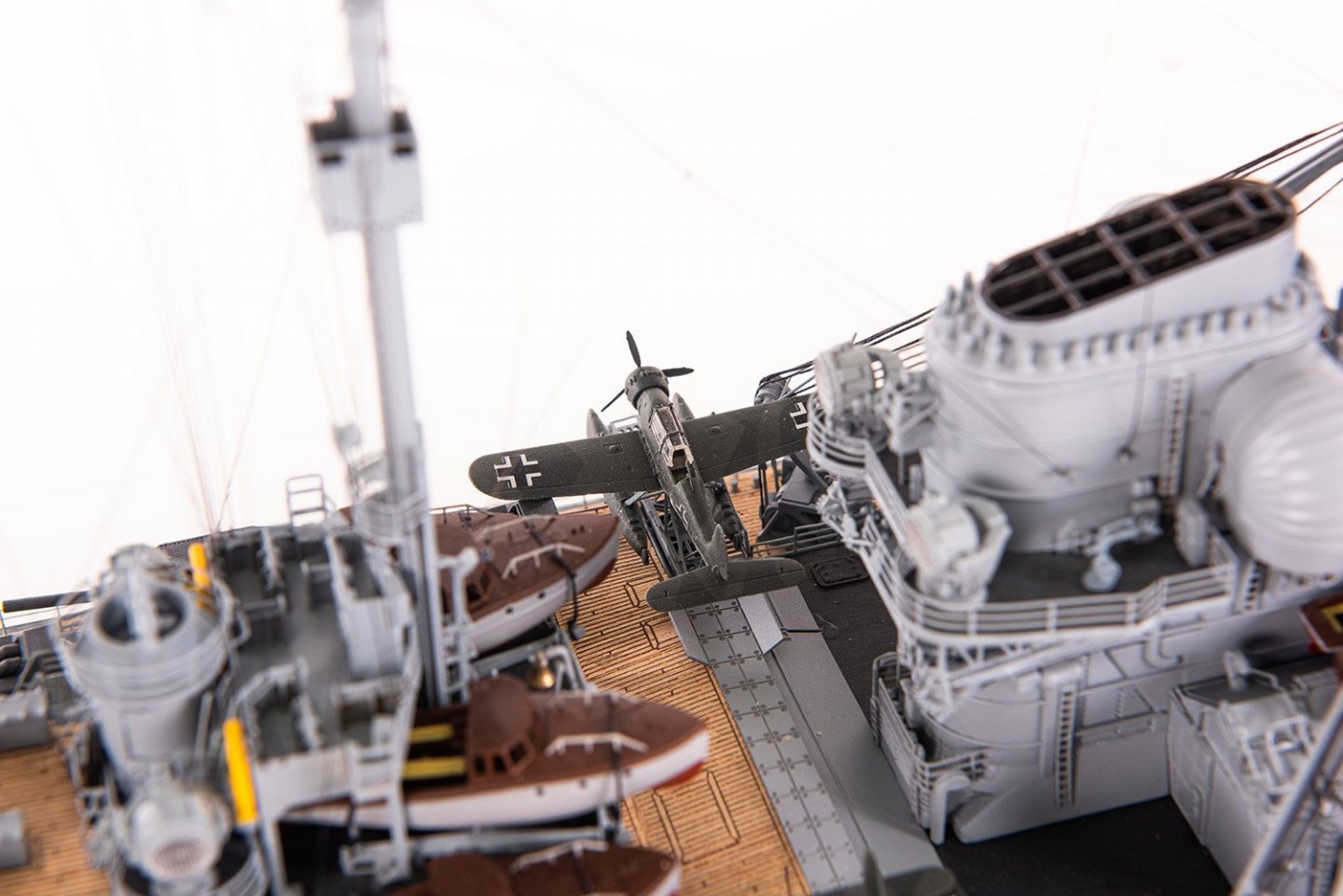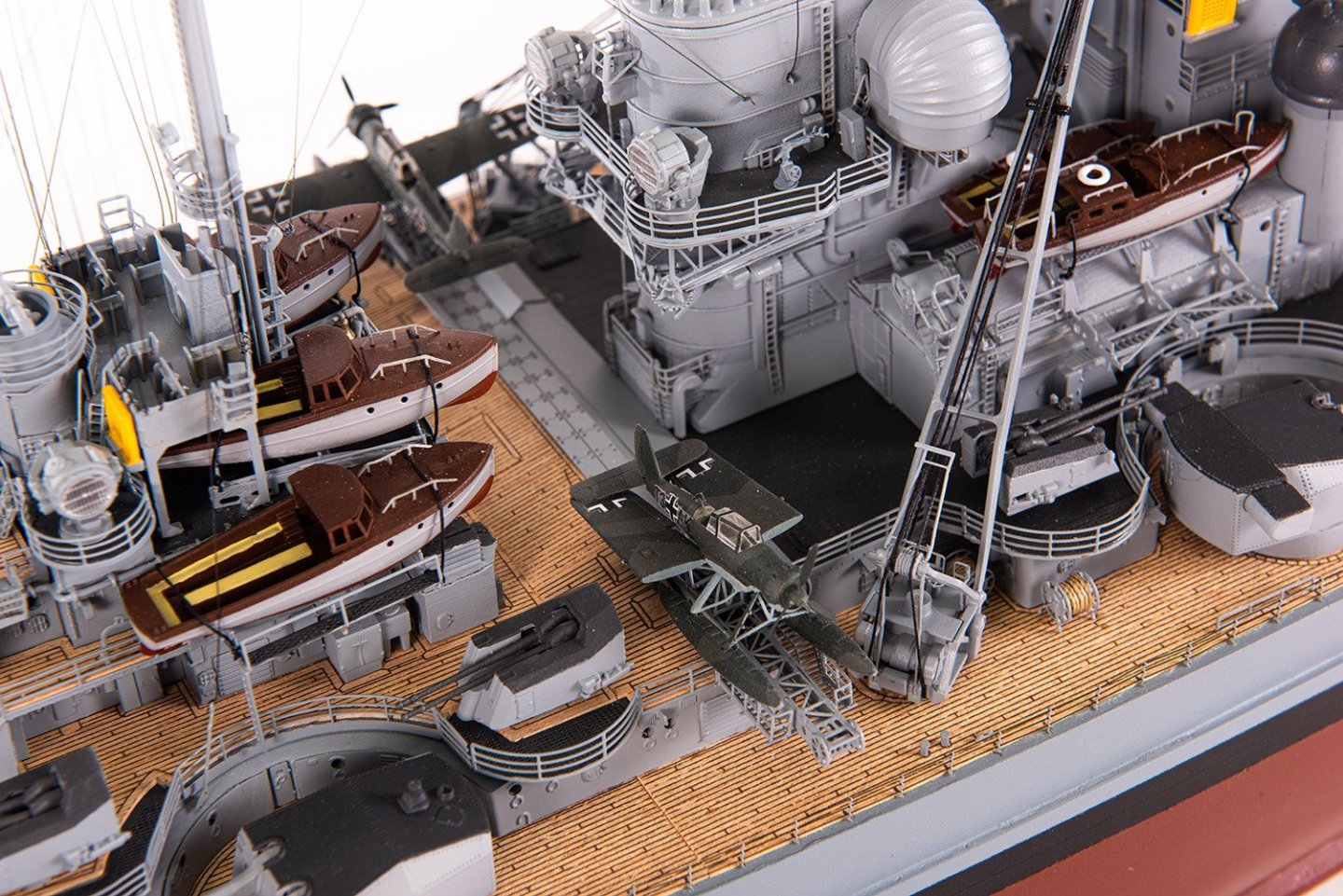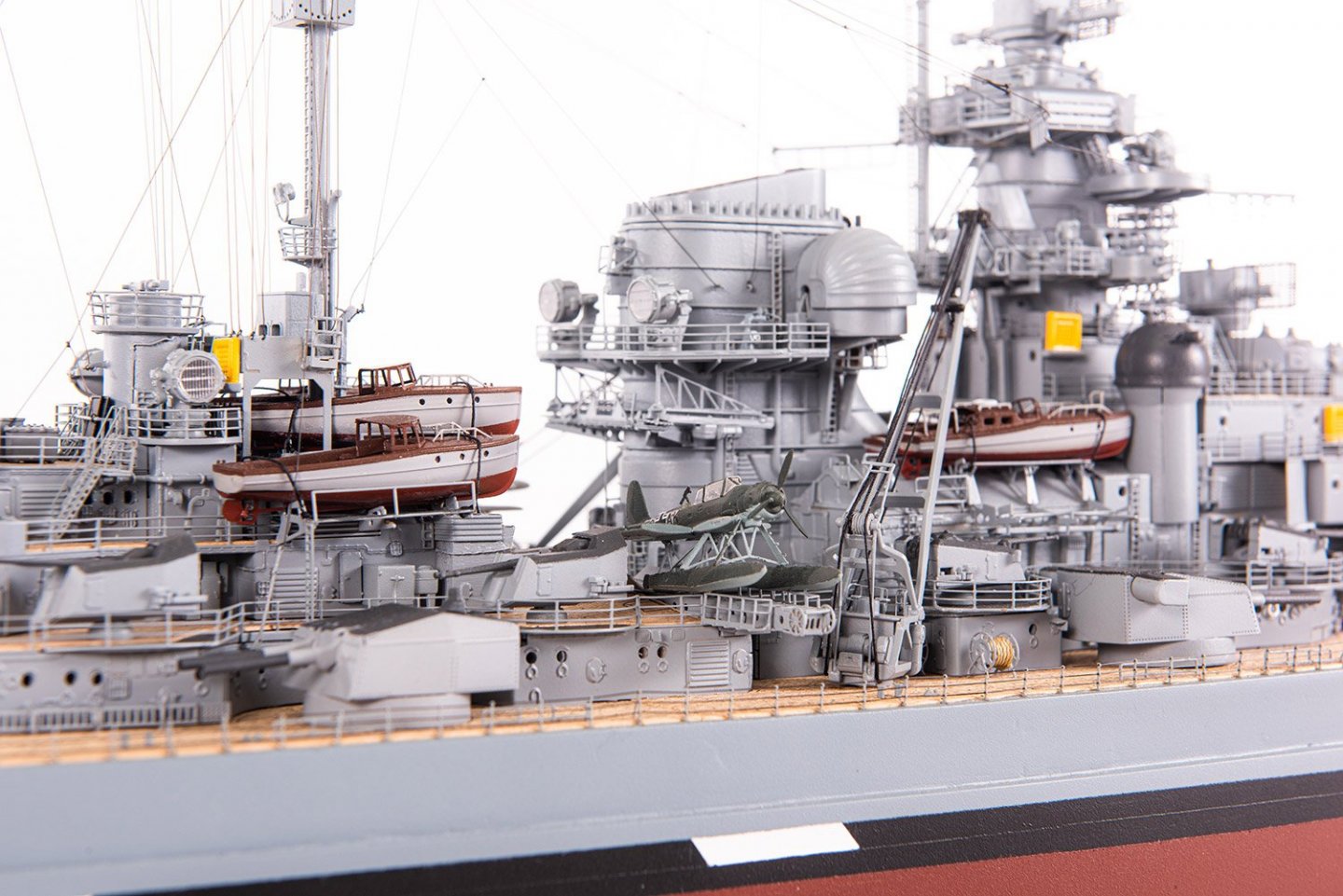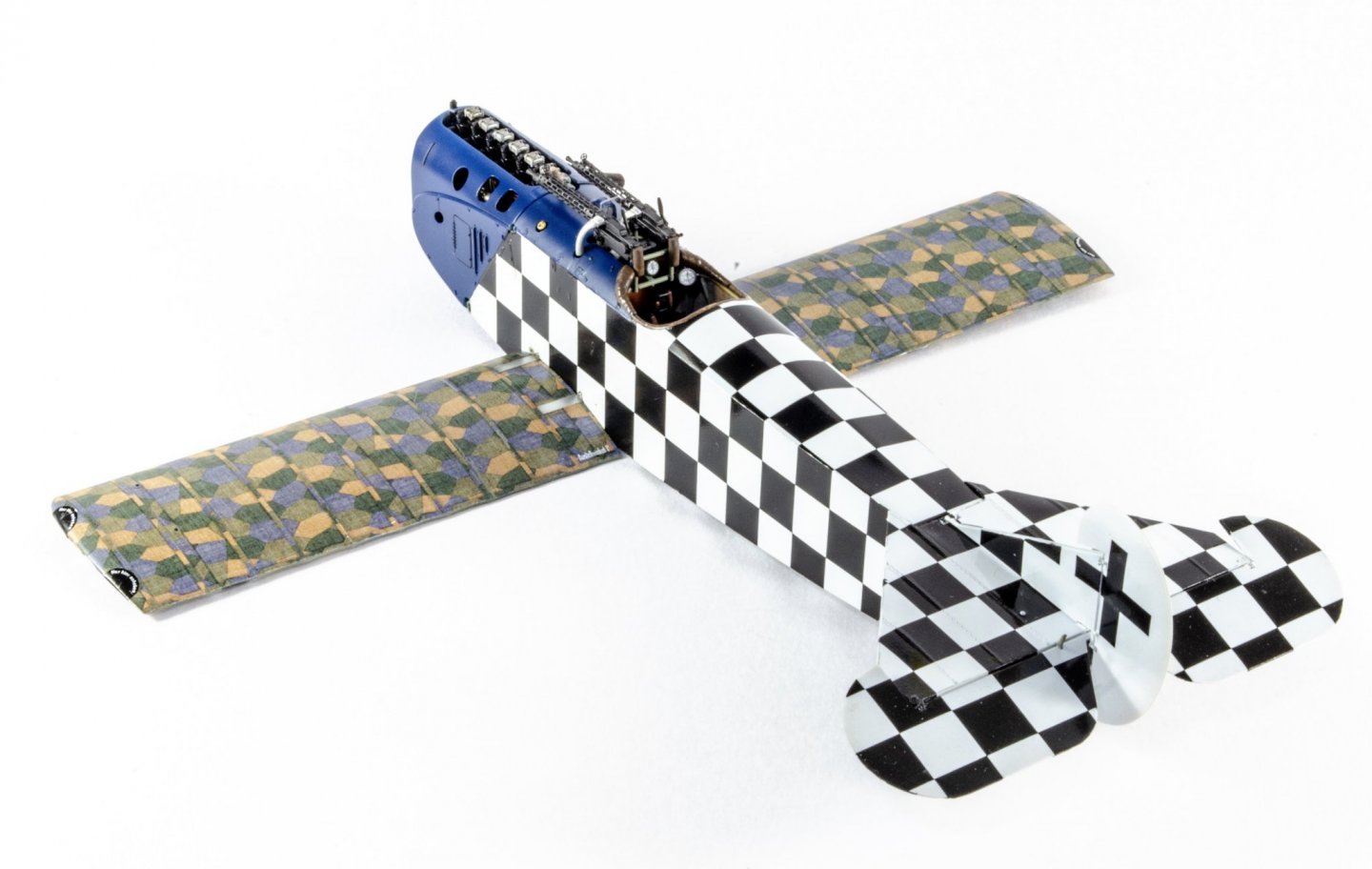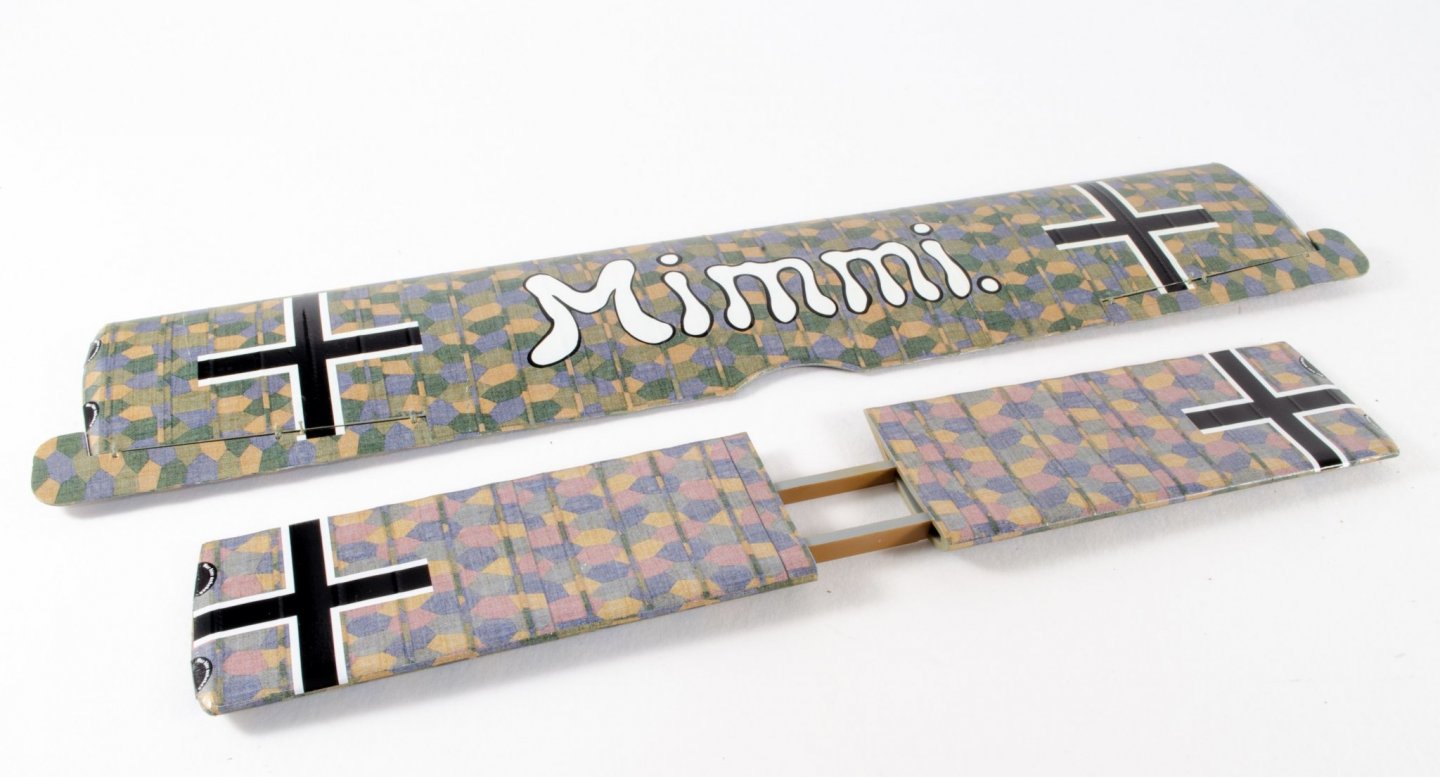-
Posts
6,067 -
Joined
-
Last visited
Content Type
Profiles
Forums
Gallery
Events
Everything posted by James H
-
I'm led to believe that price will be around €480, but there is some possible fluidity in that yet.
-
I don't think it would be an issue as this is a POB model and not a plastic kit, plus they already released this as a magazine partwork through a publisher a while ago, and it's generally considered to be the most accurate. This model us an upgraded version of that.
-
Hi all, Early next year, Amati will release their new 1:200 Bismarck kit. This one will be a beast! Here's some info on this forthcoming kit: Length 127 cm Height 29 cm Width 18 cm Hull: plank on frame (also ready to accommodate RC Control) Laser etched wooden decks Anton Bruno Cesar and Dora turrets made in plywood and covered with photoetched brass. Metal gun barrels. Options for three style of camouflage, dependent on career stage. Wooden base for etched plate Decals for Sound Locator System. The Bismarck will be unveiled at the Nuremberg Toy Fair between 29th January - 2nd February 2020, by Krick, Amati's German distributor. Here's a few photos. I'll add more over the next weeks
-
@cafmodel Great to see you here on MSW, and getting the credit you now so deserve with your kits. So pleased that you worked a resolution with Ancre too. A BIG welcome to MSW!
-
I expect they'll be welcome with open arms at another site.
- 216 replies
-
- masterkorabel
- ships
-
(and 3 more)
Tagged with:
-
That looks stunning!
-
Hi all, This will be a very abridged version of this build as the full project will be published in a forthcoming SAM (Scale Aircraft Modelling) magazine. The base kit is the Wingnut Wings Fokker D.VIIF I finally decided to dig out my Pheon decals for Wilhelm Hippert's 'Mimmi' Fokker D.VIIF. For this I'm using Wood & Wire decals to accompany the Pheon, and HGW belts. Spandau will be GasPatch and if I have a suitable wooden prop in stash, I'll use that too. I'll be adding the oxygen apparatus from a German Accessories set in a WNW kit, and modifying it to suit. Work is already way along, so here's a few images:
-
A great way to get exactly what you want if your expectations are so high, is to buy timber, plans/monograph, and embark on a masterpiece, right down to the last frame and nail. There is no such thing as a perfect kit, be it accuracy or engineering, and that goes for any genre such as plastic, resin, wood etc.
-
Do you have any specific examples?
-
Welcome to MSW! More than happy to see some paper vessels. Those can be real works of art and way beyond my scope. Looking forward to seeing your work. Jim
-
Nice to see another fellow Brit here 😎 Hope you'll sure your projects with us too.
-
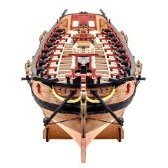
Switched from X-Acto to Excel blades......
James H replied to CPDDET's topic in Modeling tools and Workshop Equipment
Well I never! 😜 -

Switched from X-Acto to Excel blades......
James H replied to CPDDET's topic in Modeling tools and Workshop Equipment
Jeweller's rouge is Iron Oxide (FeO) mixed into a paste with water. 'Rouge' because of the colour of the oxide. Aluminium Oxide (Al2O3) is typically white) I work in science and use it FeO regularly. -

Switched from X-Acto to Excel blades......
James H replied to CPDDET's topic in Modeling tools and Workshop Equipment
I always use Swann-Morton surgical blades. Been a staple of mine for 40yrs. -
Some serious skills there! Looking forward to seeing more.
-
Hi Honza, Great to see you here. So you also built plastic models? I still do a little magazine work for that, but it's coming to an end shortly. I did a review for OcCre's HMS Terror here: So pleased to see you'll start a build log for it too. We do have another member who is building that same kit. I look forward to checking out your build. Jim
-
Your method of construction with the angled timbers looks just like how these were built!
-
I very much like the look of this one, so I'll be following 🤗 Watching for tips for when I begin my Victory!
About us
Modelshipworld - Advancing Ship Modeling through Research
SSL Secured
Your security is important for us so this Website is SSL-Secured
NRG Mailing Address
Nautical Research Guild
237 South Lincoln Street
Westmont IL, 60559-1917
Model Ship World ® and the MSW logo are Registered Trademarks, and belong to the Nautical Research Guild (United States Patent and Trademark Office: No. 6,929,264 & No. 6,929,274, registered Dec. 20, 2022)
Helpful Links
About the NRG
If you enjoy building ship models that are historically accurate as well as beautiful, then The Nautical Research Guild (NRG) is just right for you.
The Guild is a non-profit educational organization whose mission is to “Advance Ship Modeling Through Research”. We provide support to our members in their efforts to raise the quality of their model ships.
The Nautical Research Guild has published our world-renowned quarterly magazine, The Nautical Research Journal, since 1955. The pages of the Journal are full of articles by accomplished ship modelers who show you how they create those exquisite details on their models, and by maritime historians who show you the correct details to build. The Journal is available in both print and digital editions. Go to the NRG web site (www.thenrg.org) to download a complimentary digital copy of the Journal. The NRG also publishes plan sets, books and compilations of back issues of the Journal and the former Ships in Scale and Model Ship Builder magazines.

